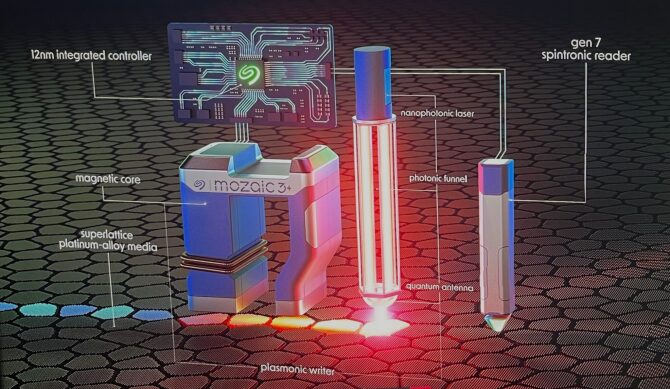With this shift, Seagate leads by a narrow margin in terms of airborne density.
The first heat-assisted magnetic recording (HAMR) drives with a capacity of 30 terabytes have finally made their debut, marking the beginning of an era of unprecedented innovation in the hard drive industry. Western Digital, Seagate’s competitor, has been in a race to 30 terabytes for years, and Seagate has now surpassed it by a hair as WD launched 28 terabyte drives in November. Seagate has been locked in this competition for years. Shingled magnetic recording (SMR) drives, which offer poorer performance than standard drives, are also being introduced by Seagate. These drives have a capacity of 32 terabytes.
Seagate’s race to 30 terabytes has been coming together for a number of years. Midway through the year 2022, the business announced that it anticipated beginning to ship 30TB HAMR drives in 2023. This was eventually accomplished, but only in limited quantities for the purpose of testing. The drives are now officially available to hyperscale data centers as a result of the announcement that was made this week, which also includes a page on its website that is dedicated to the new drives. There are ten platters with a capacity of three terabytes each, and Seagate claims that it has five terabytes per platter “on the horizon” as well.

In addition to making use of HAMR, these new drives also make use of a number of other innovative technologies that make it possible to achieve such high aerial densities. According to Seagate, the implementation of an iron-platinum superlattice structure in the physical media results in an increase in magnetic coercivity. It is essential to keep this in mind when the size of the individual bits is continuously decreased, as this can cause them to become unstable. Furthermore, the HAMR technology makes use of a plasmonic writing process that makes use of a nanophotonic laser to increase the temperature of a very small portion of the medium. Blocks & Files claims that it is capable of immediately heating a 35nm area on the media to beyond 400 degrees Celsius.
On the reading side of the equation, they also make use of a Gen 7 Spintronic Reader, which Seagate claims to be the smallest and most sensitive magnetic field sensors in the entire world. After that, everything that takes place on the inside is managed by a 12nm system-on-chip (SoC) that was built in-house by Seagate. The company claims that it is three times faster than its previous approach (we are aware that this is an ambiguous statement).
Seagate’s new drives are a component of a new platform that the company refers to as Mozaic 3+. This platform integrates HAMR with the nanoscale technologies that were discussed earlier. With normal parallel magnetic recording (PMR), the typical capacity of a data center drive is currently 16 terabytes (TB), according to the business. Therefore, upgrading to a disk with a capacity of 30 terabytes may practically quadruple the capacity while maintaining the same footprint.

